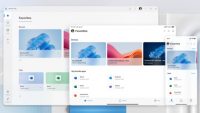Microsoft Offers Mobile Windows App for Android and Apple
September 24, 2024
After previewing its Windows App unified gateway last year, Microsoft is now rolling it out wide. This means accessing the Windows operating system from mobile devices is intended to increase productivity via a cloud-based workflow. The Windows App is now generally available on Windows, macOS, iOS, iPadOS, and via web browser, and in public preview for Android. Microsoft couches the app as a secure way “to connect to Windows across Windows 365, Azure Virtual Desktop, Remote Desktop, Remote Desktop Services, Microsoft Dev Box, and more.”
“The Windows App is essentially a hub for streaming a copy of Windows from a variety of sources,” The Verge writes, explaining that it offers “a customizable home screen, multi-monitor support, and USB redirection so you can use local devices like webcams, storage devices, and printers as if they were plugged directly into a cloud PC.”

To use this Windows app you must have a Microsoft work or school account, “as it’s primarily designed for existing users of Remote Desktop clients for Windows and other operating systems to move to,” writes The Verge, noting that “Microsoft has had similar apps for connecting to PCs remotely in Windows for decades,” and adds that they’re “useful for connecting to work PCs from a personal laptop or PC.”
By providing a unified gateway to connect across multiple services, the app aims to enhance workflow by providing a single streamlined interface.
“The app doesn’t just consolidate multiple services, Microsoft says, but will bring better device management for IT administrators, easier account switching, and includes support for both Microsoft’s Relayed RDP Shortpath and Windows 365 for frontline workers,” TechRadar reports.
PCWorld says the Windows App “is ultimately aiming to be a one-stop shop for efficiently managing the content on your connected Windows devices,” with advanced security functions for working safely from any location.
Microsoft provides a list of features and a demonstration video on its Tech Community blog. The company has also posted an explainer that says how to download and use it (although those using the browser-based version won’t need to download).

No Comments Yet
You can be the first to comment!
Leave a comment
You must be logged in to post a comment.